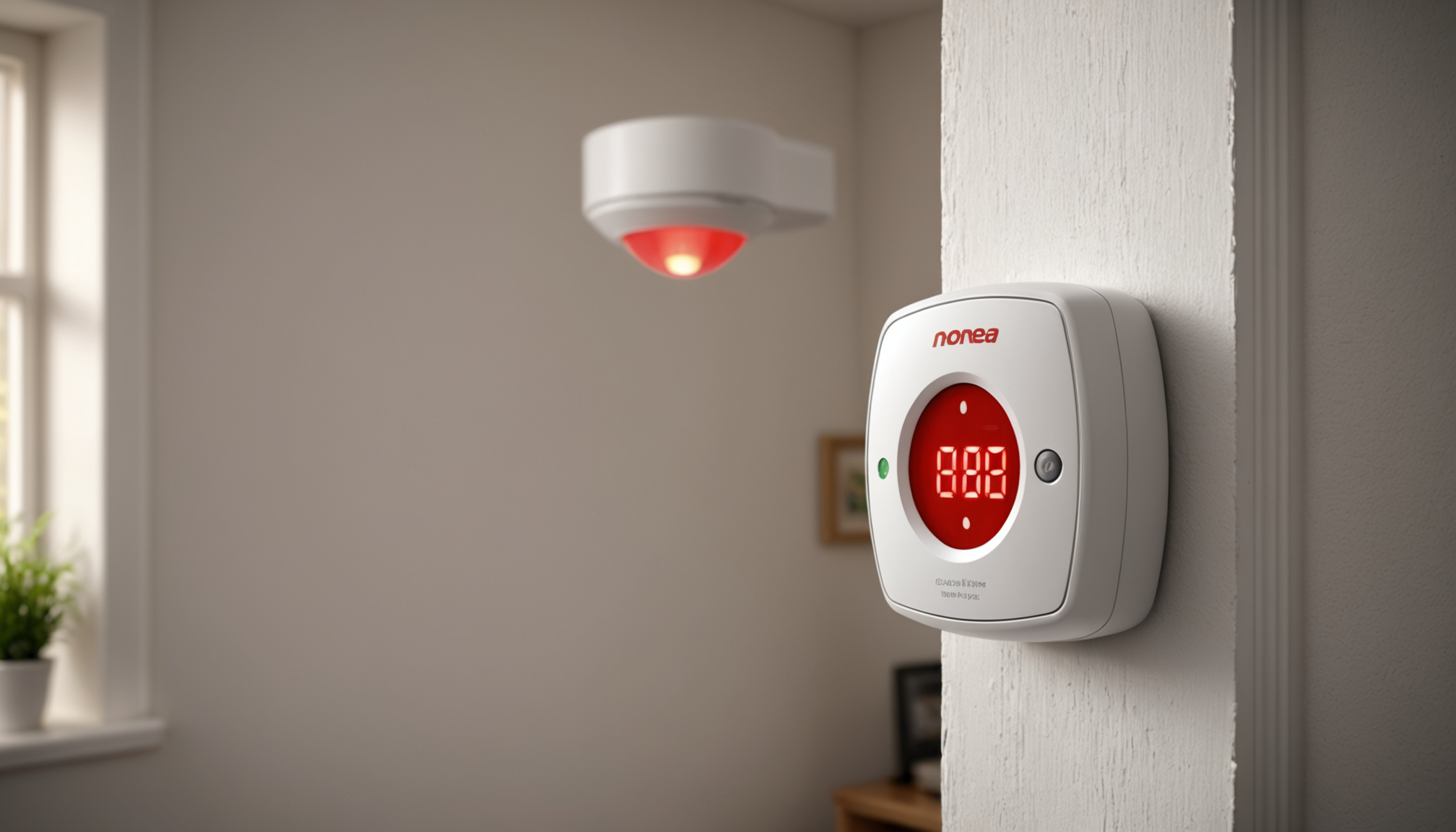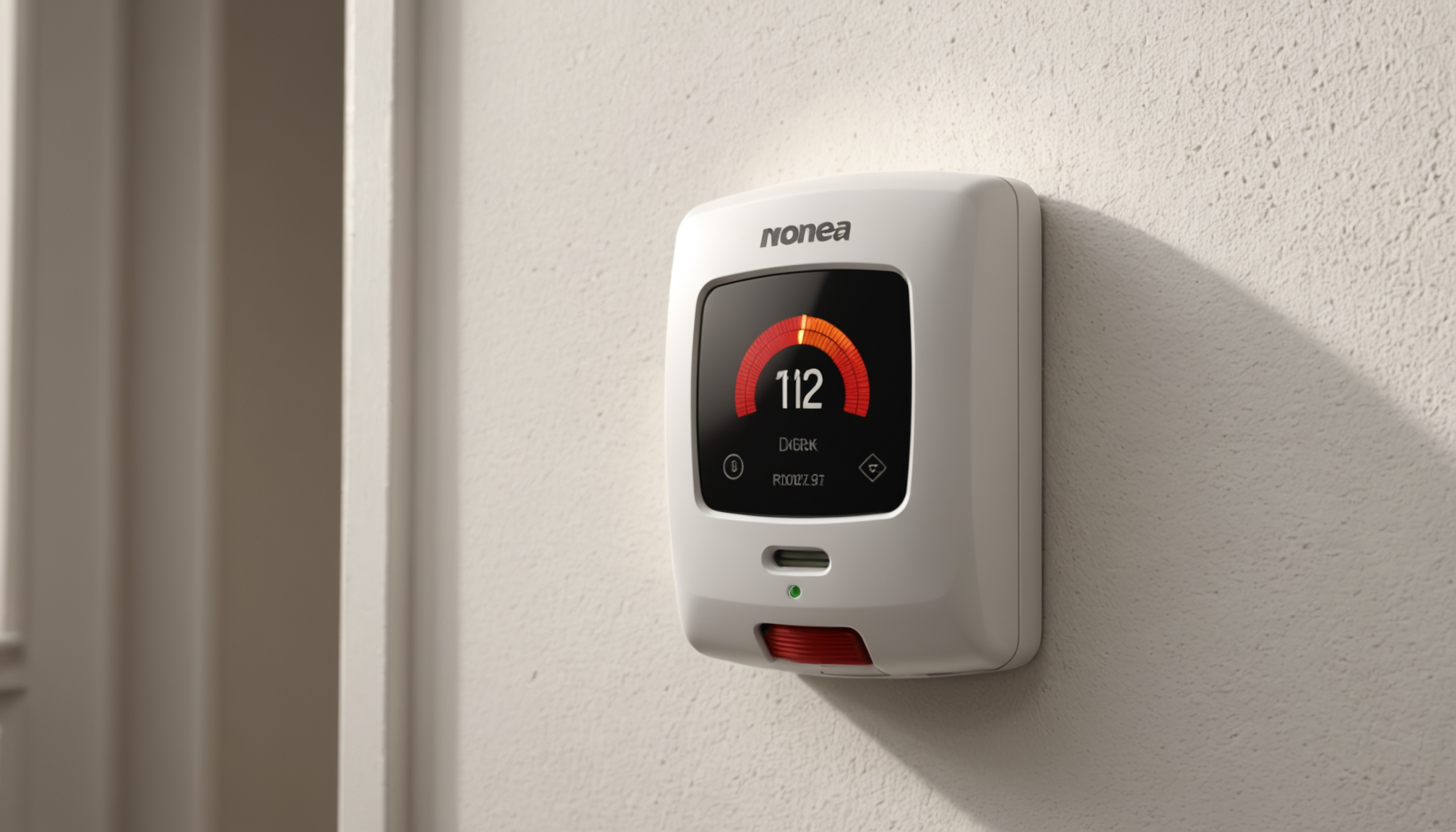In today’s modern homes, ensuring the safety of occupants is paramount, and one often overlooked yet critical component of this safety strategy is the use of carbon monoxide (CO) detectors. Carbon monoxide is a colorless, odorless gas that can be lethal at high levels. According to the Centers for Disease Control and Prevention (CDC), over 400 Americans die from unintentional CO poisoning each year, with more than 20,000 visits to the emergency room and over 4,000 hospitalizations. These statistics highlight the importance of having effective CO detectors in residences, especially in states like Missouri where fluctuating weather patterns necessitate the use of varied HVAC systems, increasing the risk of CO accumulation.
Carbon monoxide detectors serve as the first line of defense against CO poisoning, providing an early warning system that can save lives. CO can originate from various sources within the home, such as furnaces, stoves, water heaters, and gas-powered fireplaces, which are common features in many Missouri homes. In the event of a malfunction or improper ventilation in these systems, CO can accumulate, leading to potentially hazardous conditions. By installing CO detectors, residents are equipped to detect this silent threat before it reaches dangerous levels.
Moreover, the importance of CO detectors extends beyond individual family safety to encompass legislative and building regulation compliance. The Missouri Department of Health and Senior Services emphasizes the critical nature of installing and maintaining CO detectors in residential buildings. Under Missouri state law, many new homes and rental properties are required to have CO detectors installed, particularly where there are fossil-fuel-burning appliances and attached garages. This not only underscores the acknowledged risk but also reinforces the state’s commitment to protecting its residents from preventable harm.
Recommended placement areas
When it comes to the strategic placement of carbon monoxide detectors in Missouri homes, ensuring optimal coverage is crucial for maximizing safety. Since CO is a gas that can diffuse evenly throughout a space, it’s important to position detectors where they are most likely to provide timely warnings.
First and foremost, detectors should be installed near sleeping areas so that alarms are easily heard and can wake occupants during nighttime hours. According to the National Fire Protection Association (NFPA) and Missouri regulations, a CO detector should be placed within 10 feet of each bedroom door. This proximity ensures that any increase in carbon monoxide levels will trigger an alert, providing an opportunity for residents to evacuate quickly.
CO detectors should also be installed on every level of a home, including the basement, particularly in homes with separate HVAC systems or gas appliances on different floors. Basements often house furnaces and water heaters, both of which are possible sources of carbon monoxide emissions. For this reason, ensuring coverage in these areas is a priority.
Placement in key areas such as kitchens and adjacent to garages is equally important. Since kitchens may contain gas stoves and adjacent garages can allow car exhaust to enter a home, installing detectors in these locations addresses potential CO sources before they pose a significant risk. For garage installations, it’s advisable to place detectors as close to living spaces as possible to promptly detect any seepage of CO.
However, it’s equally important to avoid placing CO detectors too close to fuel-burning appliances, as this can lead to false alarms. Instead, maintain a minimum distance as specified by manufacturers, typically around 15–20 feet from appliances like stoves and heaters.
To ensure effective operation, CO detectors should not be installed in overly humid or dusty areas, such as directly in bathrooms or within direct drafts from open windows. Following these guidelines will enhance the efficacy of your CO safety strategy, offering peace of mind and protection for you and your family.
- Install detectors within 10 feet of each sleeping area to ensure alarms are audible during the night.
- Position a detector on every level of your home, including basements with fuel-burning appliances.
- Avoid installing detectors too close to gas-fueled appliances to minimize the risk of false alarms.
- Ensure detectors are near possible CO sources like kitchens and adjacent garages for early detection.
- Steer clear of humid or drafty areas that may interfere with detector functionality.
Missouri state regulations
In Missouri, regulations regarding carbon monoxide detectors are crucial for ensuring the safety of residents in both newly constructed homes and existing ones. Under Missouri law, any new residential dwelling is required to have carbon monoxide detectors installed, especially where there are appliances capable of burning fossil fuels or attached garages. This requirement reflects the state’s commitment to protecting its residents from the dangers associated with carbon monoxide poisoning.
When it comes to existing homes, owners and landlords are encouraged to retrofit properties with carbon monoxide detectors, even if it’s not strictly mandated by law. This proactive step is particularly important in older homes that might have less efficient HVAC systems or aging appliances, which can increase the risk of CO production and accumulation.
Missouri regulations also stipulate certain standards for the detectors themselves. They must meet the quality and safety requirements set by recognized safety organizations, such as UL (Underwriters Laboratories), to ensure reliable performance. This ensures that the devices are equipped with the necessary sensitivity to detect dangerous CO levels and provide ample warning time for inhabitants to evacuate or ventilate the area.
Moreover, in rental properties, Missouri law holds landlords responsible for the initial installation and ongoing maintenance of carbon monoxide detectors. Landlords must make sure that detectors are installed correctly, functioning properly, and replaced when they reach the end of their life cycle. This includes the responsibility to ensure that the tenant knows the location and operation of the detectors.
Residents of Missouri should regularly consult local building codes and regulations related to CO detectors, as these may be updated to reflect new safety insights and technology advancements. Staying informed and compliant not only aligns with legal requirements but also fortifies the safety measures to protect against the risk of carbon monoxide poisoning. Following these state regulations can serve as a life-saving measure in ensuring the safety and well-being of Missouri’s residents.
Testing and maintenance guidelines
Regular testing and maintenance of carbon monoxide detectors are vital components of ensuring household safety and complying with Missouri regulations. To enhance their effectiveness, CO detectors should be tested monthly to verify that they are functioning properly. Most models are equipped with a test button that, when pressed, will emit an alert sound if the detector is working correctly. This routine check only takes a few seconds but plays a crucial role in ensuring the detector can provide an early warning in case of elevated CO levels.
In addition to monthly testing, it’s important to replace the batteries of battery-operated CO detectors at least once a year. Some devices offer a low-battery warning beep, but regular replacement ensures uninterrupted functionality and prevents unexpected failure. However, if your device uses a sealed lithium battery, remember that these typically last up to 10 years without needing a change, but the entire unit should be replaced at that time.
The lifespan of a CO detector is generally around five to seven years, depending on the manufacturer’s specifications. It’s advisable for residents in Missouri and elsewhere to note the purchase date and plan for a timely replacement. Over time, sensor degradation can lead to inadequate detection capabilities, compromising the safety of your household.
Professional inspection of home HVAC systems and fuel-burning appliances also contributes significantly to the prevention of carbon monoxide buildup. These should be serviced annually to ensure they are venting properly and functioning efficiently. Since CO can be a byproduct of incomplete combustion from these systems, well-maintained appliances reduce the risk of emission issues.
Residents should also take the opportunity to regularly clean the detectors, carefully removing any dust or debris that could interfere with their operation. Avoid using harsh cleaning agents; a gentle wipe with a soft cloth is usually sufficient.
In conclusion, setting a preventative maintenance schedule for your CO detectors will help ensure that they remain an effective part of your home safety plan. By consistently adhering to these testing and maintenance practices, you fortify your defenses against carbon monoxide hazards and contribute positively to the well-being of your family. Remember, it’s not just about compliance with Missouri’s safety standards—regular maintenance of CO detectors is a proactive step towards securing peace of mind. Stay diligent, stay safe, and empower yourself with the knowledge that you are doing everything possible to protect your home and loved ones from this silent threat.
Recognizing carbon monoxide poisoning symptoms
- What should I do if my carbon monoxide detector goes off?
- If your carbon monoxide detector sounds an alarm, immediately evacuate your home and call emergency services. It’s crucial not to ignore the alarm, as this could indicate hazardous levels of carbon monoxide.
- How often should I replace my carbon monoxide detector?
- Most carbon monoxide detectors have a lifespan of five to seven years, after which they should be replaced to ensure optimal functionality. Always check the manufacturer’s guidelines for specific replacement recommendations.
- Can CO detectors be used in all types of homes?
- Yes, carbon monoxide detectors are designed for use in all types of homes, including single-family houses, apartments, and condos. It’s essential to place them in areas that comply with recommended guidelines to maximize their effectiveness in detecting CO gas.
- Where is the best place to install a carbon monoxide detector?
- The best placement for a carbon monoxide detector is near sleeping areas and on every level of your home, including the basement. Ensure detectors are installed in compliance with local Missouri regulations to provide coverage across potential CO emission sources.
- Do I still need a carbon monoxide detector if I don’t have any gas appliances?
- Yes, even if your home does not utilize gas appliances, carbon monoxide can still infiltrate from attached garages or shared walls in multi-unit buildings. Additionally, homes with wood-burning stoves or fireplaces are also at risk for CO exposure.

